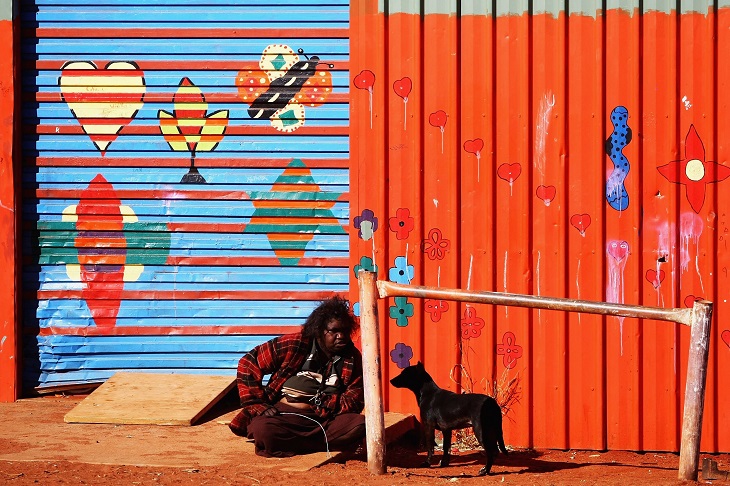The Northern Territory has the worst economic outcomes for Indigenous people in remote or very remote locations of any state or territory in Australia. South Australia has the best.
My new research with the Centre for Independent Studies ranked the states with regards to economic outcomes for Indigenous people in remote and very remote areas. The rankings were as follows (from best to worst): South Australia, Western Australia, Queensland, New South Wales, and the Northern Territory. (Victoria, Tasmania, and the ACT weren’t included because they have very small Indigenous populations in remote and very remote areas.)
These rankings were created using data pertaining to employment and housing from the 2016 census. Employment and housing are the basic building blocks of economic life in Australia, leading to myriad other positive economic, social, and cultural outcomes. Remote and very remote areas were the focus of the research because that is where absolute and comparative Indigenous disadvantage is most acute.
What is perhaps most significant is the sheer size of the difference between the Northern Territory and the rest. Some of the disparities are frankly enormous. The unemployment rate for Indigenous people in very remote Northern Territory was over 50 per cent higher than the average of the other states. Home ownership was 77 per cent lower.
The 2016 median personal income of Indigenous people in very remote Northern Territory was 28.5 per cent lower than the average for Indigenous people in very remote areas in the other states. That’s more than double the so-called ‘gender pay gap’ of 14.1 per cent to which entire government agencies are dedicated to eradicating.
The Northern Territory came last in 28 out of 36 economic categories for remote and very remote areas through the course of the 2006, 2011 and 2016 censuses.
Two ‘gaps’ in Indigenous Affairs are well understood by policymakers. Firstly, the gap between Indigenous and non-Indigenous people in general. Secondly, the gap between Indigenous people living in remote and very remote areas and everyone else in Australia (Indigenous or otherwise). These findings suggest there is a third. The gap between Indigenous people in remote and very remote Northern Territory, and Indigenous people in remote and very remote locations in other states – the Territory Gap.
What happens in the Northern Territory matters. It has the highest proportion of Indigenous people of any Australian state or territory. It also has the highest Indigenous population in remote and very remote areas in absolute numbers and as a proportion of the total population. In very remote Northern Territory, Indigenous people are the majority – the only remoteness category anywhere in Australia where that’s the case.
Astonishingly, while the Northern Territory has the worst economic outcomes for Indigenous people living in remote and very remote areas of any state or territory in Australia, it has the best outcomes for non-Indigenous Australians. The rankings for non-Indigenous people in remote and very areas are: the Northern Territory, Western Australia, Queensland, and South Australia equal third, and New South Wales.
It may be argued that factors unique to the Northern Territory are driving these results. For example, lack of economic opportunity, inhospitable climate, small population, or low population density. While these factors are at play in remote and very remote areas Australia-wide, perhaps the impact is particularly profound in the Northern Territory. And the strong economic outcomes for non-Indigenous Australians in remote and very remote Northern Territory can be explained by the high number of service providers earning generous government salaries.
On the other hand, the relative economic success of non-Indigenous Territorians in remote and very remote areas may indicate the poor economic outcomes for Indigenous people are being caused by the specific features of the institutional arrangements for the Indigenous community. Namely, the Aboriginal Land Rights (Northern Territory) Act 1976 (ALRA) and the powerful regional Land Councils, both of which act as barriers to Indigenous progress.
Indeed, previous CIS research found communities on ALRA land in the Northern Territory that have gained the right to issue leases within their townships without having to seek the approval of a Land Council accrue almost eight times as much rental income as those that require the approval of the Central Land Council. This is despite having far fewer people.
Whichever combination of factors is driving it, the Territory Gap must become a focus for leaders and policymakers.
It’s also worth noting that the most socialist, separatist, and bureaucratic Indigenous institutional milieu in the country has seemingly presided over the worst economic conditions for Indigenous people in remote and very remote areas, and the highest levels of economic racial disparity.
Peter Gregory is a researcher in development economics, entrepreneurship in developing countries, and free market solutions to poverty. He is the author of the Centre for Independent Studies paper, The Territory Gap: comparing Australia’s remote Indigenous communities.
Got something to add? Join the discussion and comment below.
Get 10 issues for just $10
Subscribe to The Spectator Australia today for the next 10 magazine issues, plus full online access, for just $10.


























Comments
Don't miss out
Join the conversation with other Spectator Australia readers. Subscribe to leave a comment.
SUBSCRIBEAlready a subscriber? Log in